
Top American Football/NFL Teams in History Based On Total Trophies Won – 2023
October 24, 2023
The contenders for the Champions League are starting to emerge.
December 15, 2023Top 10 South American Football/Soccer Clubs Of All Times
In the realm of South American football, a few names stand out as giants in the sport. Each of these clubs possesses a unique history, a fervent fan base, and a treasure trove of iconic moments that have etched their names into football’s annals. From Brazil’s Santos Club to Argentina’s River Plate, and the other legendary institutions in between, these clubs have helped write the story of South American football.
In this series, we’ll delve into the legacies, iconic players, and the essence that makes each of these clubs a powerhouse in their respective countries and the continent. Let’s kick off our journey through the footballing wonderland of South America, where the beautiful game isn’t just a sport but a way of life.
Following are the top South American Football Clubs
1. Santos Club: A Legacy of Excellence
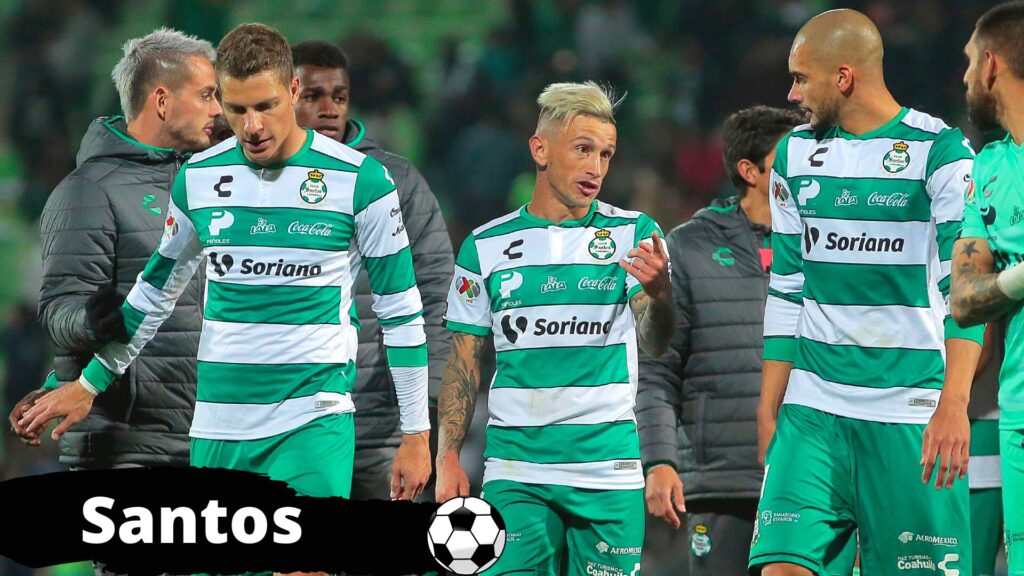
Santos Futebol Clube, commonly known simply as Santos or Santos FC, is a Brazilian professional football club based in Santos, São Paulo. It plays in the Campeonato Brasileiro Série A, the top tier of the Brazilian football league system, and the Campeonato Paulista, the São Paulo state championship. Santos is one of the most successful and popular clubs in Brazil, and is ranked number 10 among the best 10 South American football clubs of all time.
Santos was founded in 1912 and has since won 8 domestic championships, 1 Copa de Brasil, and 3 Copa Libertadores. The club is also known for producing some of the greatest players in the history of football, including Pelé, Robinho, and Neymar.
Pelé, widely regarded as the greatest footballer of all time, joined Santos’ youth academy at the age of 15 and made his first-team debut at the age of 16. He went on to play for Santos for 18 years, scoring over 1,000 goals for the club. Pelé led Santos to two Copa Libertadores titles and two Intercontinental Cups.
Robinho and Neymar are two other Santos products who have gone on to achieve great success at the international level. Robinho won the FIFA World Cup with Brazil in 2002 and was named the South American Footballer of the Year in 2006. Neymar is the all-time leading goalscorer for both Santos and the Brazil national team. He won the FIFA Confederations Cup with Brazil in 2013 and was named the South American Footballer of the Year in 2011 and 2012.
Despite losing Neymar to Barcelona in 2013, Santos continues to be a force in Brazilian football. The club has won the Campeonato Paulista twice since Neymar’s departure and has also reached the final of the Copa Libertadores on two occasions. Santos is known for its attacking style of play and its commitment to developing young players.
Here are some additional thoughts on Santos Club that you may want to include in your article:
- Santos is one of the few Brazilian clubs that has never been relegated from the top division.
- Santos’ home stadium, Vila Belmiro, is known for its unique atmosphere and its passionate fans.
- Santos has a strong rivalry with São Paulo FC, which is located in the same state.
- Santos is a major tourist attraction in the city of Santos, and its games are often attended by visitors from all over the world.
2. Corinthians Club: Brazil’s Giant
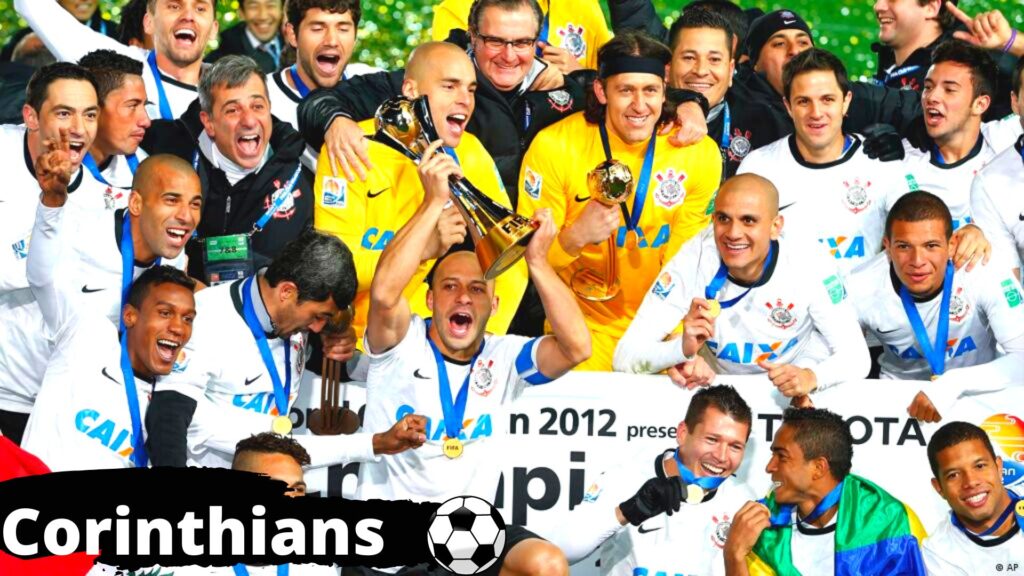
Sport Club Corinthians Paulista, commonly known as Corinthians, is a Brazilian professional football club based in São Paulo. It plays in the Campeonato Brasileiro Série A, the top tier of the Brazilian football league system, and the Campeonato Paulista, the São Paulo state championship. Corinthians is the largest and most popular club in Brazil and is ranked number 9 among the best 10 South American football clubs of all time.
Corinthians was founded in 1910 and has since won 7 domestic championships, 3 Copa do Brasil trophies, 1 Supercopa do Brasil title, and a record 30 São Paulo State championships. In international competitions, the club won the inaugural FIFA Club World Championship in 2000, repeated the feat in 2012 after being crowned Copa Libertadores de América champions for the first time that same year, and also won a Recopa Sudamericana title.
Corinthians is known for its passionate fans and its attacking style of play. The club has also produced some of the greatest players in Brazilian football history, including Ronaldo, Carlos Tevez, Javier Mascherano, and Sócrates.
Ronaldo joined Corinthians in 2009 after a series of injuries had threatened to derail his career. He went on to score 35 goals in 69 appearances for the club, helping them to win the 2009 Campeonato Paulista and the 2011 Copa Libertadores.
Tevez joined Corinthians in 2005 as a teenager and quickly became one of the club’s most popular players. He scored 46 goals in 72 appearances for the club, helping them to win the 2005 Campeonato Brasileiro Série A title.
Mascherano joined Corinthians in 2006 and spent two seasons at the club. He won the 2007 Campeonato Brasileiro Série A title with Corinthians and was also named the South American Footballer of the Year in 2007.
Sócrates played for Corinthians from 1978 to 1984. He was a member of the famous Corinthians “Democracy Team” of the early 1980s, which was known for its commitment to social justice and its unique style of play. Sócrates is considered to be one of the greatest Brazilian footballers of all time.
Corinthians is a global football powerhouse with a proud history and a passionate fan base. The club continues to be one of the most successful teams in Brazil and South America, and it is always a contender for major trophies.
Here are some additional thoughts on Corinthians Club that you may want to include in your article:
- Corinthians has one of the largest social media followings of any football club in the world.
- Corinthians is known for its strong rivalry with Palmeiras FC, which is located in the same city.
- Corinthians is a major tourist attraction in the city of São Paulo, and its games are often attended by visitors from all over the world.
3. River Plate Club: Argentina’s Most Successful Club

Club Atlético River Plate, commonly known as River Plate, is an Argentine professional sports club based in the Belgrano neighborhood of Buenos Aires. Founded in 1901, the club is named after the English name for the city’s estuary, Río de la Plata. Although many sports are practised at the club, River Plate is best known for its professional football team, which has won Argentina’s Primera División championship a record of 38 times. River Plate is also the most successful club in Latin America regarding titles earned, having won 4 Copa Libertadores titles, 3 Intercontinental Cups, 1 Copa Sudamericana, and 3 Recopa Sudamericana titles.
River Plate is known for its attacking style of play and its passionate fans. The club has also produced some of the greatest players in Argentinian football history, including Alfredo Di Stéfano, Mario Kempes, Javier Saviola, Hernán Crespo, and Ariel Ortega.
Despite not having much success in the recent ten years, River Plate remains one of the most popular and successful clubs in South America. The club is always a contender for major trophies, and its games are always sold out.
Here are some additional thoughts on River Plate Club that you may want to include in your article:
- River Plate has a strong rivalry with Boca Juniors, which is also located in Buenos Aires. The two clubs have met over 240 times in all competitions, with River Plate holding a slight edge in the head-to-head record.
- River Plate’s home stadium, El Monumental, is the largest stadium in Argentina and one of the largest in South America. It has a capacity of over 83,000 spectators.
- River Plate is a major tourist attraction in Buenos Aires, and its games are often attended by visitors from all over the world.
4. Boca Juniors Club: The Pride of Buenos Aires

Club Atlético Boca Juniors, commonly known as Boca Juniors, is an Argentine professional sports club based in the La Boca neighborhood of Buenos Aires. Founded in 1905, the club is named after its original location in the Boca district of the city. Although many sports are practiced at the club, Boca Juniors is best known for its professional football team, which has won Argentina’s Primera División championship a record 35 times. Boca Juniors is also the most successful club in the Copa Libertadores, having won the competition a record 7 times.
Boca Juniors is known for its passionate fans and its attacking style of play. The club has also produced some of the greatest players in Argentinian football history, including Diego Maradona, Carlos Bianchi, Juan Román Riquelme, and Carlos Tevez.
Boca Juniors is one of the most popular and successful clubs in South America. The club is always a contender for major trophies, and its games are always sold out. Boca Juniors is also a major tourist attraction in Buenos Aires, and its games are often attended by visitors from all over the world.
Here are some additional thoughts on Boca Juniors Club that you may want to include in your article:
- Boca Juniors has a strong rivalry with River Plate, which is also located in Buenos Aires. The two clubs have met over 240 times in all competitions, with Boca Juniors holding a slight edge in the head-to-head record.
- Boca Juniors’ home stadium, La Bombonera, is one of the most iconic stadiums in the world. It is known for its unique atmosphere and its passionate fans.
- Boca Juniors is a major cultural icon in Argentina. The club’s colors, blue and yellow, are often associated with the country’s national identity.
5. Club Atlético Peñarol: Uruguay’s Most Successful Club

Club Atlético Peñarol, commonly known as Peñarol, is a Uruguayan professional sports club based in the La Blanqueada neighborhood of Montevideo. Founded in 1891, the club is named after the Uruguayan department of Paysandú. Although many sports are practiced at the club, Peñarol is best known for its professional football team, which has won the Uruguayan Primera División a record 51 times. Peñarol is also the most successful club in the Copa Libertadores, having won the competition a record 5 times.
Peñarol is known for its attacking style of play and its passionate fans. The club has also produced some of the greatest players in Uruguayan football history, including Juan Alberto Schiaffino, José Leandro Andrade, Héctor Scarone, and Alcides Ghiggia.
Despite not having won a continental championship since 1987, Peñarol remains one of the most popular and successful clubs in South America. The club is always a contender for major trophies, and its games are always sold out. Peñarol is also a major tourist attraction in Montevideo, and its games are often attended by visitors from all over the world.
Alcides Ghiggia: The Legend of Peñarol
Alcides Ghiggia is widely regarded as the greatest player in Peñarol’s history. He is best known for scoring the winning goal against Brazil in the 1950 FIFA World Cup Final, which is known as the “Maracanazo”. Ghiggia played for Peñarol from 1946 to 1957, scoring 142 goals in 223 appearances. He helped Peñarol to win 4 Uruguayan Primera División titles and 2 Copa Libertadores titles.
Ghiggia is a legend at Peñarol and in Uruguay. He is remembered for his skill, his determination, and his winning mentality. He is also remembered for his iconic goal in the 1950 World Cup Final, which is considered to be one of the greatest goals in football history.
Here are some additional thoughts on Peñarol Club that you may want to include in your article:
- Peñarol has a strong rivalry with Nacional, which is also located in Montevideo. The two clubs have met over 500 times in all competitions, with Peñarol holding a slight edge in the head-to-head record.
- Peñarol’s home stadium, Estadio Campeón del Siglo, is the largest stadium in Uruguay. It has a capacity of over 40,000 spectators.
- Peñarol is a major cultural icon in Uruguay. The club’s colors, yellow and black, are often associated with the country’s national identity.
6. Club Social y Deportivo Colo-Colo: Chile’s Most Successful Club
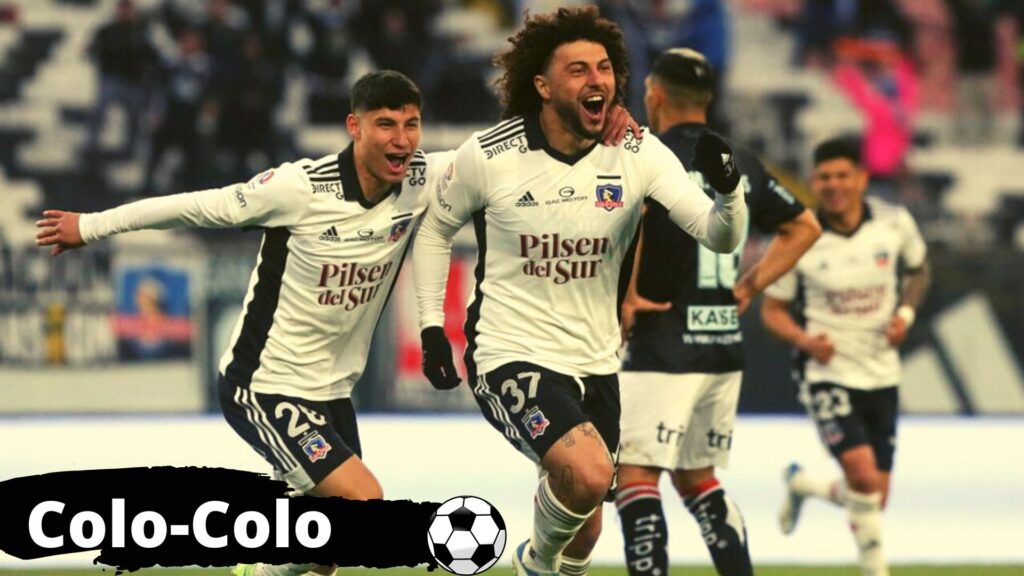
Club Social y Deportivo Colo-Colo, commonly known as Colo-Colo, is a Chilean professional football club based in the Macul neighborhood of Santiago. Founded in 1925, Colo-Colo is the only club in Chile to have never been relegated from the Primera División, the top tier of the Chilean football league system. Colo-Colo is also the most successful club in Chilean football, having won 32 Primera División titles, 13 Copa Chile titles, and 1 Copa Libertadores title.
Colo-Colo is known for its attacking style of play and its passionate fans. The club has also produced some of the greatest players in Chilean football history, including David Arellano, Carlos Caszely, Marcelo Salas, and Alexis Sánchez.
Colo-Colo has played a significant role in developing young talents for the Chilean national team. Some of the most famous Chilean players who have come through Colo-Colo’s youth academy include Arturo Vidal, Gary Medel, and Claudio Bravo.
Here are some additional thoughts on Colo-Colo Club that you may want to include in your article:
- Colo-Colo has a strong rivalry with Universidad de Chile, which is also located in Santiago. The two clubs have met over 280 times in all competitions, with Colo-Colo holding a slight edge in the head-to-head record.
- Colo-Colo’s home stadium, Estadio Monumental David Arellano, is the largest stadium in Chile. It has a capacity of over 62,000 spectators.
- Colo-Colo is a major cultural icon in Chile. The club’s colors, white and black, are often associated with the country’s national identity.
7. Club Olimpia: Paraguay’s Most Successful Club
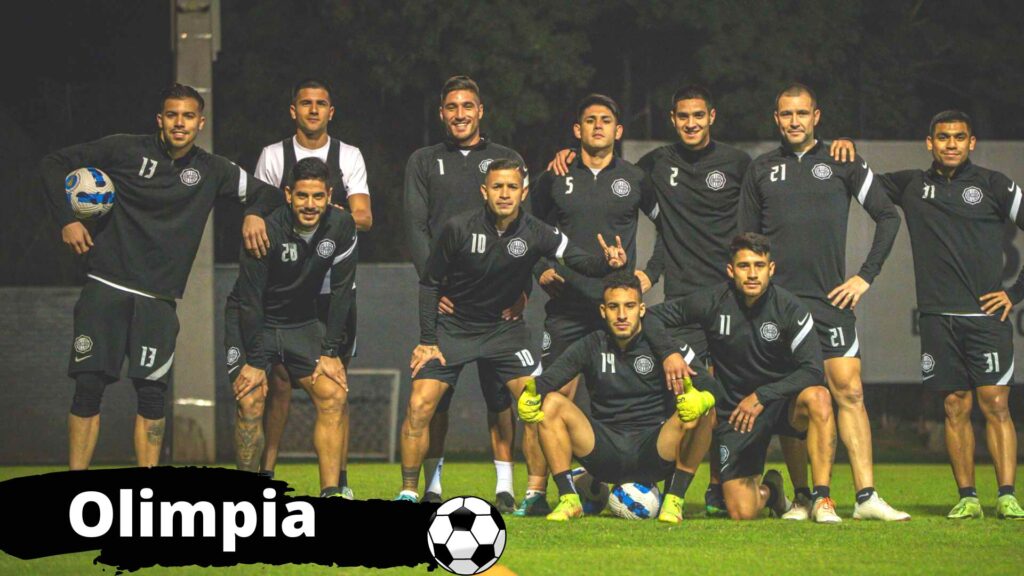
Club Olimpia is a Paraguayan professional football club based in the Barrio Mariscal López neighborhood of Asunción. Founded in 1902, Olimpia is the most successful club in Paraguayan football, having won 45 Primera División titles, 25 Copa Paraguay titles, and 3 Copa Libertadores titles. Olimpia is also the only Paraguayan club to have won the Copa Interamericana and the Intercontinental Cup.
Olimpia is known for its attacking style of play and its passionate fans. The club has also produced some of the greatest players in Paraguayan football history, including Roque Santa Cruz, Arsenio Erico, and Julio César Romero.
Roque Santa Cruz is Olimpia’s most famous export. He played for the club from 1998 to 2002, scoring 60 goals in 86 appearances. He helped Olimpia to win 3 Primera División titles and 1 Copa Libertadores title. Santa Cruz is the all-time leading goalscorer for the Paraguay national team, with 32 goals.
Olimpia is a major cultural icon in Paraguay. The club’s colors, black and white, are often associated with the country’s national identity. Olimpia is also known for its passionate fans, who are known for their unique songs and chants.
Here are some additional thoughts on Club Olimpia that you may want to include in your article:
- Olimpia has a strong rivalry with Cerro Porteño, which is also located in Asunción. The two clubs have met over 300 times in all competitions, with Olimpia holding a slight edge in the head-to-head record.
- Olimpia’s home stadium, Estadio Manuel Ferreira, is the largest stadium in Paraguay. It has a capacity of over 25,000 spectators.
- Olimpia is a major tourist attraction in Asunción, and its games are often attended by visitors from all over the world.
8. Atlético Nacional: Colombia’s Most Successful Club
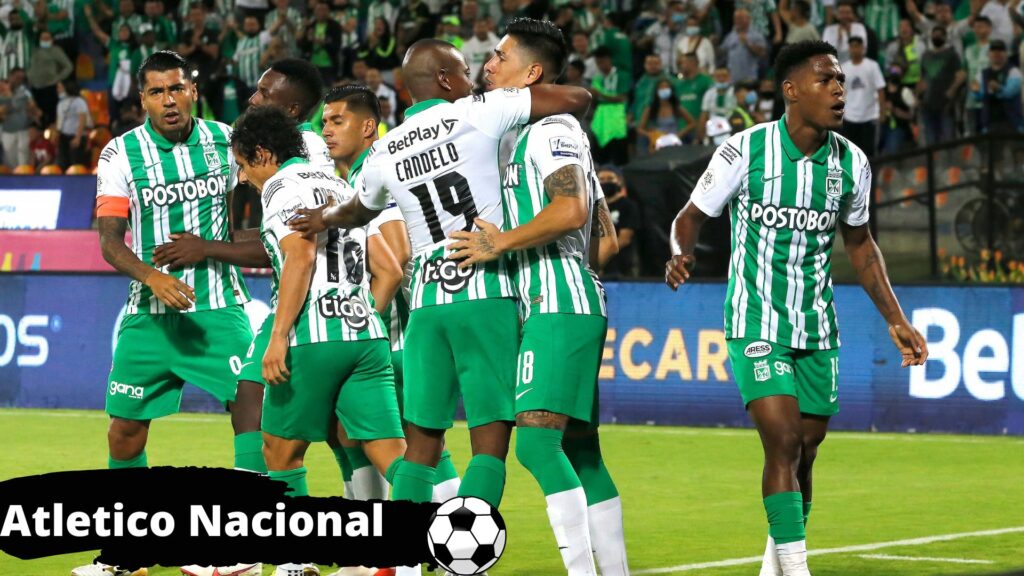
Corporación Deportiva Atlético Nacional, commonly known as Atlético Nacional, is a Colombian professional football club based in the Itagüí municipality of Medellín. Founded in 1944, Atlético Nacional is the most successful club in Colombian football, having won 32 Primera A titles, 2 Copa Colombia titles, and 2 Copa Libertadores titles. Atlético Nacional is also the only Colombian club to have won the Recopa Sudamericana.
Atlético Nacional is known for its attacking style of play and its passionate fans. The club has also produced some of the greatest players in Colombian football history, including René Higuita, Carlos Valderrama, Andrés Escobar, and Juan Pablo Ángel.
Atlético Nacional has experienced a recent uptick in performances, winning seven league titles in the past ten years. This has made the club one of the top football organizations in Latin America.
Here are some additional thoughts on Atlético Nacional Club that you may want to include in your article:
- Atlético Nacional has a strong rivalry with Independiente Medellín, which is also located in Medellín. The two clubs have met over 280 times in all competitions, with Atlético Nacional holding a slight edge in the head-to-head record.
- Atlético Nacional’s home stadium, Estadio Atanasio Girardot, is the largest stadium in Colombia. It has a capacity of over 45,000 spectators.
- Atlético Nacional is a major tourist attraction in Medellín, and its games are often attended by visitors from all over the world.
9. Independiente Club

Independiente is a highly successful football club from Avellaneda, Argentina, that has recently been relegated to the second tier of Argentine football. The club has a rich history, having won 16 Primera División titles, 9 Copa Nacional titles, 7 Copa Libertadores titles, 3 Copa Interamericanas, 2 Supercopa Sudamericanas, multiple Intercontinental Cups, and once a Recopa Sudamericana. It is the most successful club in Argentina just based on silverware.
However, in recent years, Independiente has struggled both on and off the field. The club has been plagued by financial problems and has not won a major trophy since 2017. In 2022, Independiente was relegated to the Primera B Nacional, the second tier of Argentine football, for the first time in its history.
There are a number of factors that have contributed to Independiente’s recent downfall. One factor is the club’s financial problems. Independiente has been in debt for many years, and this has made it difficult to compete with other clubs in the Primera División. The club has also been poorly managed in recent years, which has led to a number of mistakes in the transfer market and on the pitch.
Another factor that has contributed to Independiente’s downfall is the rise of other clubs in Argentina. In recent years, clubs such as River Plate, Boca Juniors, and Racing Club have become more successful than Independiente. These clubs have been able to invest more money in their squads and have benefited from better management.
Despite its recent struggles, Independiente remains a popular club with a large and passionate fan base. The club’s fans are known for their loyalty and support, even during difficult times. Independiente is also a club with a rich history, and its fans are proud of the club’s achievements.
It is too early to say when Independiente will return to the Primera División. However, the club has a strong foundation, and it is supported by a large and passionate fan base. If the club can overcome its financial problems and improve its management, it is possible that Independiente will return to the top of Argentine football in the near future.
10. São Paulo FC: The Best of South America
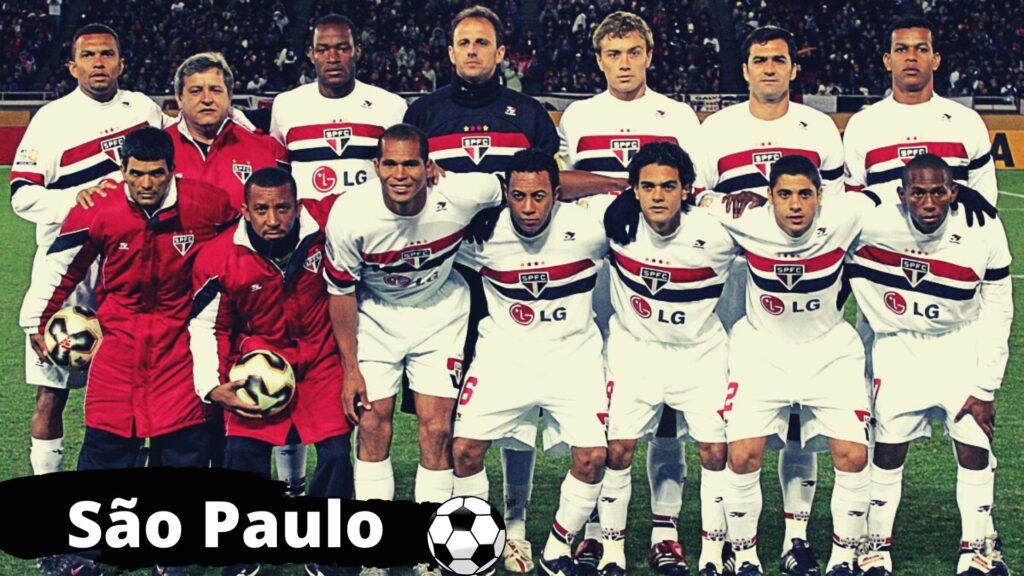
São Paulo Futebol Clube, commonly known as São Paulo FC, is a Brazilian professional football club based in the Morumbi neighborhood of São Paulo. Founded in 1930, São Paulo is one of the most successful and popular clubs in Brazil, and is ranked as the best South American football club of all time.
São Paulo has won 21 Campeonato Brasileiro Série A titles, 3 Copa Libertadores titles, 2 Intercontinental Cups, and 1 FIFA Club World Cup. The club is also one of the five Brazilian clubs that has never been relegated from the top division.
São Paulo is known for its attacking style of play and its passionate fans. The club has also produced some of the greatest players in Brazilian football history, including Pelé, Kaká, and Ronaldo.
Here are some additional thoughts on São Paulo FC that you may want to include in your article:
- São Paulo has a strong rivalry with Corinthians, which is also located in São Paulo. The two clubs have met over 290 times in all competitions, with São Paulo holding a slight edge in the head-to-head record.
- São Paulo’s home stadium, Estádio Cícero Pompeu de Toledo (Morumbi), is the largest stadium in São Paulo and the second-largest stadium in Brazil. It has a capacity of over 72,000 spectators.
- São Paulo is a major tourist attraction in São Paulo, and its games are often attended by visitors from all over the world.
São Paulo is a truly global football powerhouse, and it is no surprise that it is ranked as the best South American football club of all time. The club has a rich history, a passionate fan base, and a commitment to winning trophies. São Paulo is sure to continue to be a major force in South American football for many years to come.
Conclusion
The top South American football clubs, including Santos Club, Corinthians Club, River Plate Club, Boca Juniors Club, Peñarol Club, Colo-Colo Club, Olimpia Club, Atlético Nacional Club, Independiente Club, and São Paulo FC, have left an indelible mark on the world of football. With their unique histories, iconic rivalries, passionate fan bases, and contributions to the sport, they showcase the rich football culture of South America. Each club has produced legendary players and achieved remarkable success, solidifying their places in the annals of football history. Despite challenges faced by some of these clubs, they remain cultural icons and continue to captivate fans worldwide with their enduring legacy.
Frequently Asked Questions (FAQs)
1. What is Santos Club’s most significant achievement?
Santos Club is renowned for producing football legends like Pelé, Robinho, and Neymar. The club’s most significant achievement includes winning 8 domestic championships, 1 Copa de Brasil, and 3 Copa Libertadores titles. Pelé’s contributions also led Santos to two Copa Libertadores titles and two Intercontinental Cups.
2. Who are some of the famous players associated with Corinthians Club?
Corinthians has a rich history and has seen remarkable players like Ronaldo, Carlos Tevez, Javier Mascherano, and Sócrates. These players have left an indelible mark on the club’s legacy.
3. What is the unique aspect of River Plate Club’s history?
River Plate Club is famous for its strong rivalry with Boca Juniors. The two clubs have met over 240 times in all competitions, with River Plate holding a slight edge in the head-to-head record. This rivalry has shaped the club’s history and the Argentinian football landscape.
4. Can you tell us about the Boca Juniors’ iconic stadium?
Boca Juniors’ home stadium, La Bombonera, is one of the most iconic stadiums globally, known for its unique atmosphere and passionate fans. It’s a must-visit for football enthusiasts.
5. Who is considered the legend of the Peñarol Club?
Alcides Ghiggia, a Peñarol legend, is known for scoring the winning goal against Brazil in the 1950 FIFA World Cup Final, an event known as the “Maracanazo.” His legacy with Peñarol includes 4 Uruguayan Primera División titles and 2 Copa Libertadores titles.
6. What sets Colo-Colo apart in Chilean football?
Colo-Colo is notable for its continuous presence in the top tier of Chilean football, never being relegated from the Primera División. The club is also known for developing talents like Arturo Vidal, Gary Medel, and Claudio Bravo.
7. What are Olimpia Club’s major achievements?
Olimpia Club is Paraguay’s most successful club, boasting 45 Primera División titles, 25 Copa Paraguay titles, and 3 Copa Libertadores titles. The club’s stadium, Estadio Manuel Ferreira, is the largest in Paraguay.
8. Can you elaborate on Atlético Nacional’s recent successes?
Atlético Nacional has seen significant success in the past decade, winning seven league titles. This resurgence has elevated the club’s status as a football powerhouse in Latin America.
9. What factors have led to Independiente Club’s recent struggles?
Independiente has faced financial problems, poor management, and increased competition from other Argentine clubs like River Plate and Boca Juniors, which have contributed to its relegation to the second division.
10. What makes São Paulo FC a prominent South American club?
São Paulo FC is one of Brazil’s most successful clubs, having won 21 Campeonato Brasileiro Série A titles and 3 Copa Libertadores titles. The club is known for its rich history and passionate fans.
Read More:
Top 5 Most Handsome Soccer Players – 2023 Top Rankings
Highest Paid Soccer Players in the World 2023 – Richest Footballers


